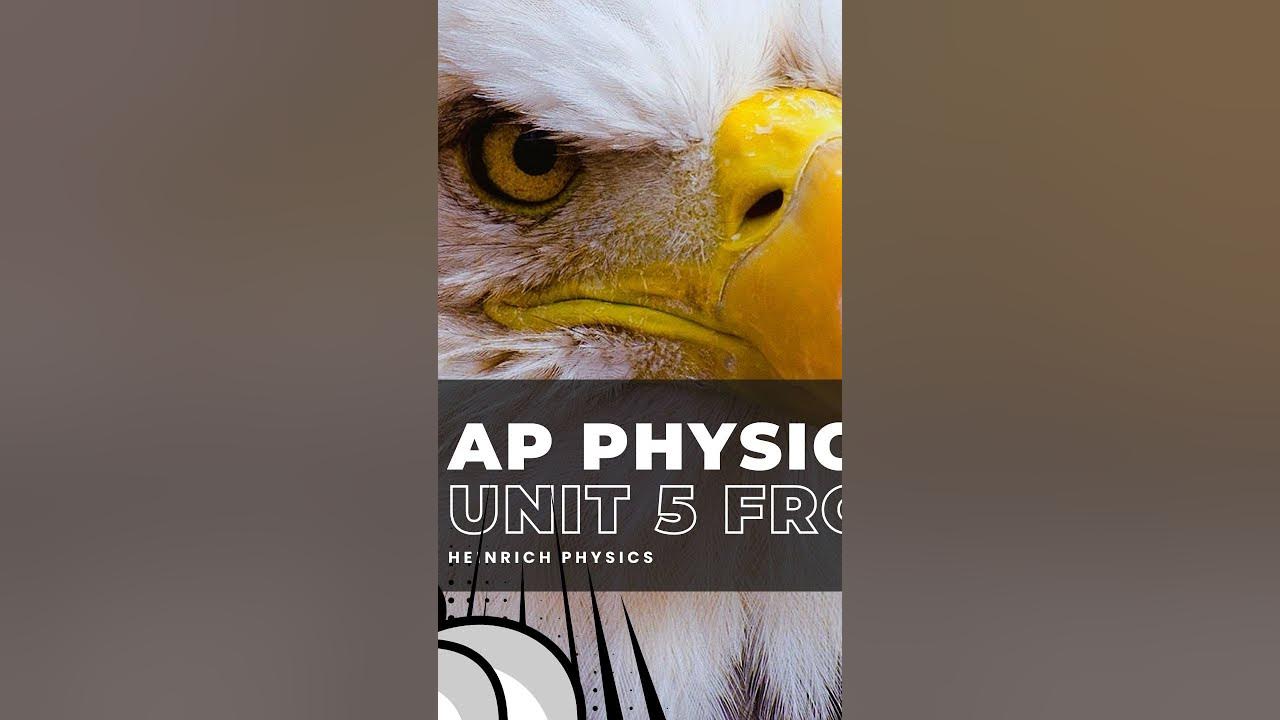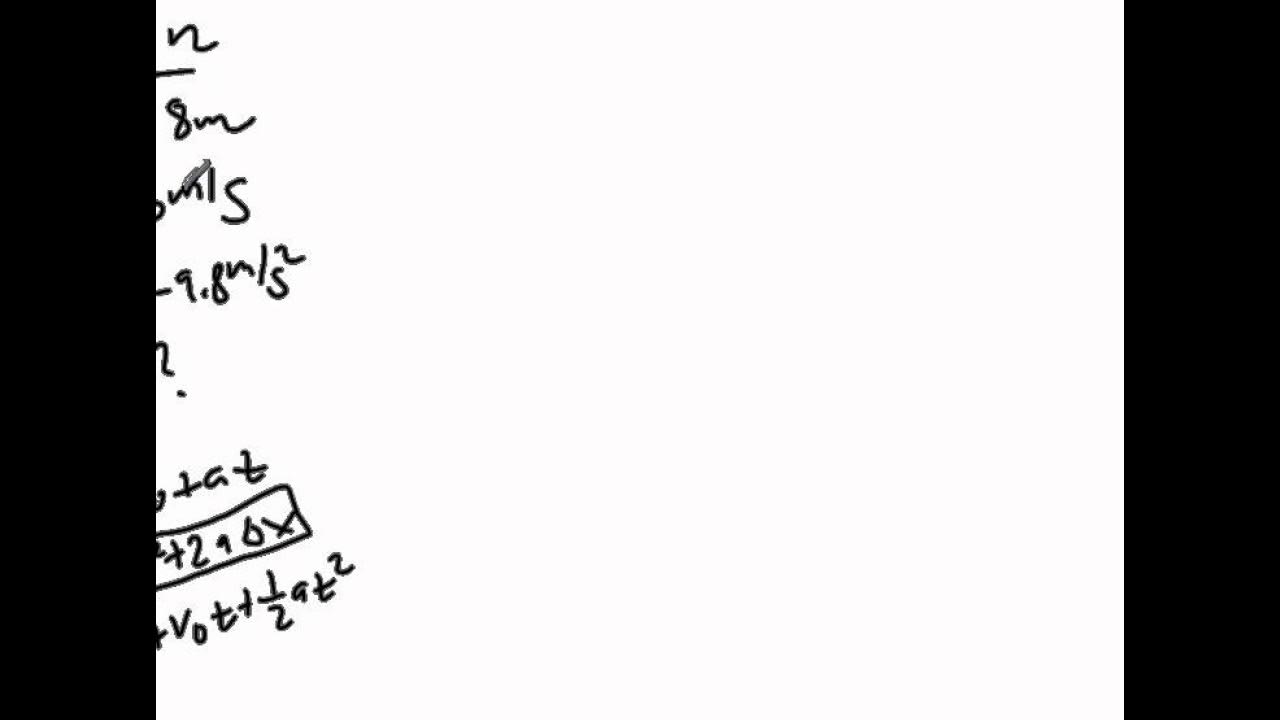AP Physics - Collisions in Multiple Dimensions
TLDRIn the video, Dan Fullerton discusses a two-dimensional collision problem involving a Q ball (mass 0.17 kg) and an eight ball (mass 0.16 kg). Initially, the Q ball has a velocity of 3 m/s in the X direction, while the eight ball is at rest. After the collision, the Q ball is deflected 30° and the eight ball 45°. Using the conservation of momentum and trigonometry, Fullerton calculates the post-collision velocities: the Q ball at 2.14 m/s and the eight ball at 2.06 m/s. This comprehensive analysis demonstrates how to handle multi-dimensional collision problems effectively.
Takeaways
- 📌 The problem discussed is a two-dimensional collision involving two balls, the Q ball and the eight ball.
- 📐 The Q ball has a mass of 0.17 kg and is given an initial velocity of 3 m/s in the X direction.
- ⚽️ The eight ball has a mass of 0.16 kg and is initially at rest before the collision.
- 🔄 After the collision, the Q ball is deflected 30° in the opposite direction, and the eight ball is deflected 45° from the Q ball's original path.
- 🎯 To solve the problem, a momentum table is set up for both the X and Y directions, considering the unknown velocities after the collision.
- 📈 The X momentum of the Q ball before the collision is 0.51 kg·m/s, and the eight ball's initial momentum is zero.
- 📊 The conservation of momentum law is applied to establish equations for both the X and Y components of the balls' velocities after the collision.
- 🔢 The Y momentum equations are used to derive a relationship between the velocities of the Q and eight balls.
- 🧠 By solving the system of equations, the final velocities of both balls after the collision are determined: the eight ball at 2.06 m/s and the Q ball at 2.14 m/s.
- 📚 The process involves using trigonometric functions to calculate the X and Y components of the velocities after the collision.
- 🌐 For further help or information on analyzing collisions in multiple dimensions, A+ Physics website is recommended.
Q & A
What is the main topic of the video?
-The main topic of the video is the analysis of collisions in multiple dimensions, specifically a two-dimensional collision between a Q ball and an eight ball.
What are the masses of the Q ball and the eight ball?
-The mass of the Q ball is 0.17 kg, and the mass of the eight ball is 0.16 kg.
What is the initial velocity of the Q ball before the collision?
-The initial velocity of the Q ball before the collision is 3 m/s in the X direction.
How are the balls deflected after the collision?
-After the collision, the Q ball is deflected 30° in the opposite direction, and the eight ball is deflected 45° from the Q ball's previous path.
What is the law used to solve for the velocities of the balls after the collision?
-The law of conservation of momentum is used to solve for the velocities of the balls after the collision.
What is the significance of setting up a momentum table for the X and Y directions?
-Setting up a momentum table for the X and Y directions helps to organize the known and unknown values for each direction, allowing for a systematic approach to solving the problem.
How is trigonometry used in this problem?
-Trigonometry is used to determine the X and Y components of the balls' velocities after the collision, taking into account the angles of deflection.
What are the initial momenta of the Q ball and the eight ball before the collision?
-The initial momentum of the Q ball before the collision is 0.51 kg·m/s, while the eight ball, being at rest, has an initial momentum of 0.
What are the final velocities of the Q ball and the eight ball after the collision?
-After the collision, the Q ball has a velocity of 2.14 m/s, and the eight ball has a velocity of 2.06 m/s.
How does the video demonstrate the conservation of momentum?
-The video demonstrates the conservation of momentum by showing that the total momentum before the collision equals the total momentum after the collision, both in the X direction and the Y direction.
What resource is recommended for more help or information on analyzing collisions in multiple dimensions?
-For more help or information on analyzing collisions in multiple dimensions, the video recommends checking out A+ Physics.com.
Outlines
📚 Introduction to Multidimensional Collisions
In this segment, Dan Fullerton introduces the concept of collisions in multiple dimensions, specifically focusing on a two-dimensional collision problem. The scenario involves Bert striking a Q ball of mass 17 kg, giving it a velocity of 3 m/s in the X direction, which then collides with an 8 ball of mass 16 kg that was initially at rest. After the collision, the Q ball is deflected 30° in the opposite direction, and the 8 ball is deflected 45° from the Q ball's original path. The task is to find the velocities of both the Q and 8 balls after the collision. Dan begins by setting up a momentum table for the X direction, using the given masses and velocities to calculate the initial momentum of the balls. He then explains the need to use trigonometry to determine the X components of the balls' velocities after the collision. The process is repeated for the Y direction, emphasizing the conservation of momentum in both dimensions.
🧮 Solving the Collision Problem
In this part, Dan Fullerton continues the problem-solving process by diving into the algebra and mathematics required to find the velocities of the Q and 8 balls after the collision. He starts by setting up equations based on the conservation of momentum in both the X and Y directions, using the previously calculated momentum components. Dan then solves the Y momentum equation for the Q ball's velocity (VC), finding a relationship between VC and the 8 ball's velocity (V8). With this relationship, he substitutes VC into the X momentum equation to solve for V8, determining the velocity of the 8 ball to be 2.06 m/s. Using this result, Dan calculates the velocity of the Q ball to be 2.14 m/s after the collision. The segment concludes with Dan emphasizing the importance of using the law of conservation of momentum and keeping track of the X and Y components when analyzing collisions in multiple dimensions. He encourages viewers to seek further help or information at A+ Physics.com and wishes them a great day, highlighting his commitment to educational support.
Mindmap
Keywords
💡collisions
💡momentum
💡dimensions
💡mass
💡velocity
💡conservation of momentum
💡trigonometry
💡components
💡system of equations
💡A+ Physics
Highlights
Dan Fullerton discusses collisions in multiple dimensions.
A problem involving a two-dimensional collision is presented.
Bert strikes a Q ball of mass 0.17 kg, giving it a velocity of 3 m/s in the X direction.
The Q ball then strikes an 8 ball of mass 0.16 kg, which was previously at rest.
After the collision, the 8 ball is deflected 45° from the Q Ball's previous path.
The Q ball is deflected 30° in the opposite direction after the collision.
The goal is to find the velocity of the Q ball and the 8 ball after the collision.
Momentum table is set up to solve the problem, starting with the X direction.
Trigonometry is used to determine the X components of the balls' velocities after the collision.
The total momentum before and after the collision must be the same due to the law of conservation of momentum.
The Y momentum is also considered, as the balls may have velocities in the Y direction after the collision.
Two equations are derived from the conservation of momentum in both the X and Y directions.
The system of equations is solved to find the unknown velocities of the Q and 8 balls.
The final velocities are calculated to be 2.06 m/s for the 8 ball and 2.14 m/s for the Q ball.
The method demonstrates how to analyze collisions in multiple dimensions using conservation of momentum.
For more help or information, A+ Physics is recommended as a resource.
The presentation is engaging and informative for those interested in physics problems.
Transcripts
5.0 / 5 (0 votes)
Thanks for rating:





